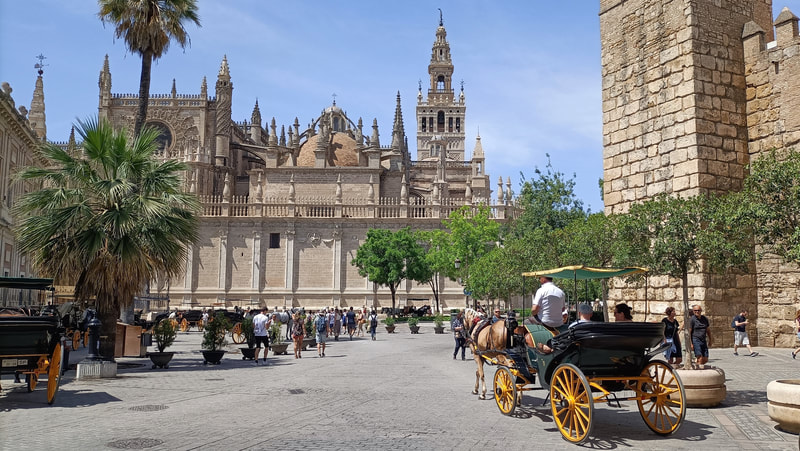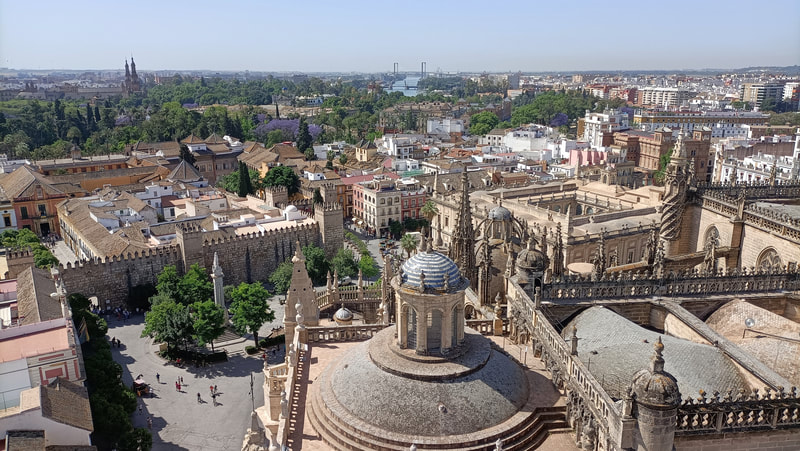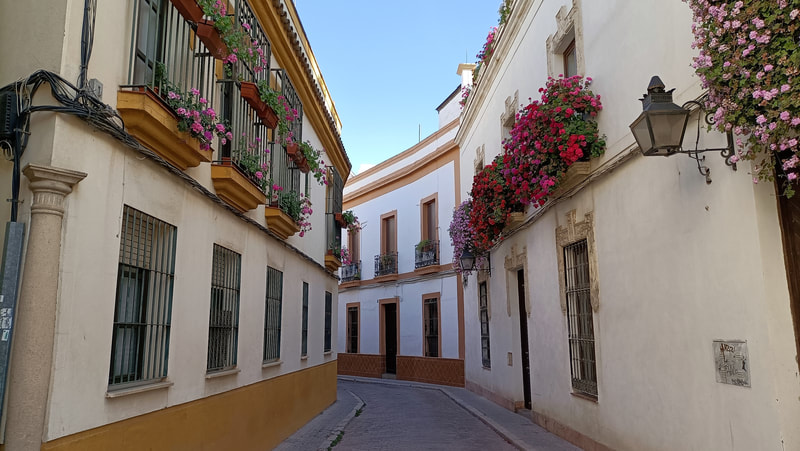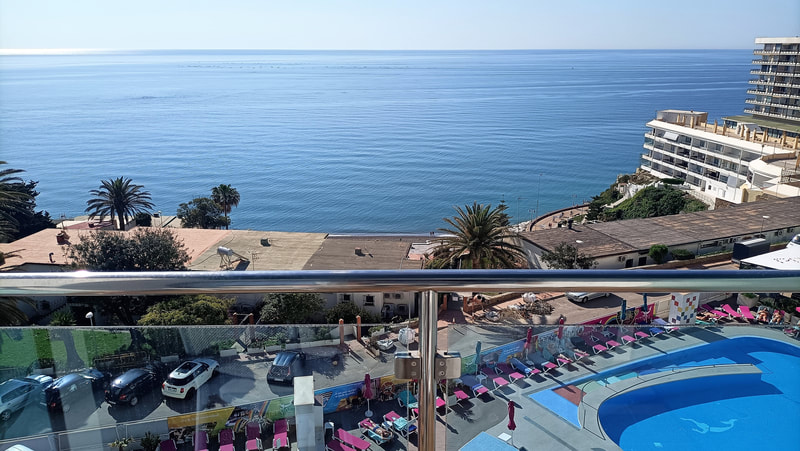|
By train I travelled in 40 minutes from Cordoba to Sevilla. I stayed near the Hercules de Alameda square and walked my way around the city. In the afternoons and late evenings I took my time at the bars for a cold beer and some delicious tapas.
From the giant Plaza de Espana square I strolled through the Maria Luisa park, the old town along the Guadalquivir river to the bull-fighting arena. In the old town I visited the UNESCO World Heritage sites of the Cathedral with its bell tower 'la Giralda' and the Moorish Alcazar palace complex with its beautiful garden. On the other side of the river I explored the Triana district. This is considered to be the birthplace of the famous flamenco dance and music. I chilled out under a tree at a festival in the EXPO 92 area.
0 Comments
From Torremolinos I took the metro to Malaga, where I took a train to Cordoba. I stayed two nights in a guesthouse in the old Jewish Quarter. Cordoba has the highest summer temperatures in the whole of Europe. And with 36 degrees Celsius in the afternoon it was already very hot to stroll around in the historic centre.
Cordoba was a Roman settlement on the right bank of the Guadalquivir, taken over by the Visigoths, and followed by the Muslim conquests in the eighth century. In that time Cordoba became the world leading centre of education and learning and the second largest city of Europe. In 1236 Cordoba was conquered by the Christian conquest. The large history still shows off by examples of Moorish architecture, such as the Mezquita-Catedral. During my stay Cordoba hosted its annually Festival de los Patios. Many houses of the historic centre opened their private patios to the public and compete in a contest in floral decorations. I started my trip to Andalucia with four days of relaxing at the coast in Torremolinos. During the day I spend most of my time in the sun at the swimming pool.
|
Places in Spain
All
Spain Archives
April 2024
|




































